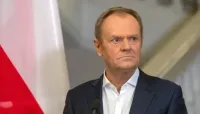Burevestnik bluff: Kremlin feigns NATO war-readiness in bid to pressure West
global.espreso.tv
Mon, 27 Oct 2025 16:51:00 +0200

The test of the Burevestnik cruise missile was conducted on October 21. According to the Russian side, the missile traveled 14,000 kilometers and was in the air for about 15 hours.According to Gerasimov, the missile's technical characteristics allow it to be used with guaranteed accuracy against highly protected targets at any distance.In turn, the Russian dictator noted that the tests "once again confirmed the reliability of Russia's nuclear shield" and stated that the Burevestnik is "a unique product that no one else in the world has.""It is worth noting that behind the current military activity of the occupying country is an attempt to pressure the West and Ukraine. The Kremlin is playing a "multi-vector game" to impose its own plan for ending the war—with territorial concessions from Kyiv."Recently, the American Institute for the Study of War (ISW) stated in its new report that Russia has allegedly entered the "first phase of preparation" for a higher-level war.At the same time, ISW itself clarified that there is currently no evidence that the Kremlin has decided to start this phase or set a timeline for it. This logic is contradictory: they simultaneously talk about preparing for escalation and immediately refute it. This is a superficial, incompetent analysis—about nothing. Russia is currently simulating readiness for war with NATO, raising the stakes, while simultaneously sending signals of "readiness to negotiate."The visit of the head of the Russian Direct Investment Fund, Dmitriev, to the United States for "official" negotiations is a clear confirmation of this. Notably, the visit took place a few days after U.S. President Donald Trump announced new sanctions against the occupying country.Notably, Dmitriev's visit is taking place amid statements by high-ranking White House officials regarding U.S. disappointment with the Kremlin's refusal to end the war in Ukraine. Moreover, the Russian representative's visit is occurring amid the cancellation of a planned summit between the U.S. president and the Russian dictator.Therefore, it is no coincidence that a special Kremlin envoy stated that Russia, the U.S., and Ukraine are supposedly "close" to a diplomatic solution that could end the Russian-Ukrainian war."In fact, this is the Russians playing on two fronts. On the one hand, the Kremlin demonstrates military activity—the test of the Burevestnik cruise missile, maneuvers in international waters near NATO borders, violations of the airspace of Poland, Estonia, Germany, and Denmark by unknown drones, and sabotage at defense industry enterprises in Great Britain. On the other hand, Putin speaks of a supposed "readiness for peace.""This demonstration has one goal—to force the West to accept Russia's terms for ending the war in Ukraine. The Kremlin is showing: if there are no agreements, "we are ready for escalation"; if they agree, "we are ready to remove the nuclear threat from the agenda."Furthermore, I will remind you of the escalation near the Swedish island of Gotland, which is of strategic importance for shipping in the Baltic Sea. Russia has repeatedly hinted at the possibility of its capture.In parallel, the deployment of military infrastructure near the borders of Finland is underway—the construction of new bases in the Petrozavodsk area and the formation of brigades in the northern direction.Thus, we can state that Russia is exerting complex pressure on the Alliance countries, trying to achieve several goals at once.However, this is not preparation for an offensive, but a demonstration of force. Russia wants to show that it is supposedly capable of confronting NATO if the Alliance expands its military-technical cooperation with Ukraine. I will note that such a strategy by the occupying country is not new. Back in 2015, the then-commander of NATO forces in Europe, Ben Hodges, warned about the possibility of implementing the "Suwalki corridor"—that is, the same pressure scenario that Russia is demonstrating today.Therefore, to talk about some "zero phase" of the war is simply ignorance. Russia is not preparing for a major war. It is demonstrating readiness only for a domestic audience—to show that "they are still worth something." Because for an external audience, all these public statements and demonstrative actions have no effect.Quite indicative in this sense was the statement by NATO Secretary General Mark Rutte that the Russian dictator is running out of resources to continue the war against Ukraine. According to the Alliance's Secretary General, the situation at the front testifies to the ineffectiveness of Russia's strategy and the enormous price Russia is paying for minor advances.Furthermore, speaking in Slovenia, Rutte commented ironically on the state of the Russian fleet, noting that "Moscow's naval presence in the Mediterranean Sea has come to naught."These statements indicate an understanding of the problems facing the NATO bloc. And also that the West truly understands the challenges that will arise in the event of an intensification of hostilities, or their possible transfer directly to the territory of European countries.Specially for EspresoAbout the author. Dmytro Sniehyrov, military expert, co-chairman of the civic initiative Prava Sprava.The editors do not always share the opinions expressed by the authors of the blogs.








